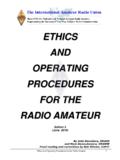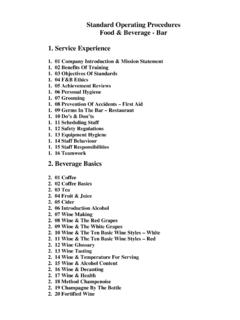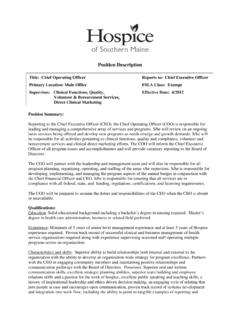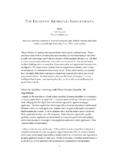Transcription of NATIONAL DAIRY HERD IMPROVEMENT PROGRAM
1 Effective June 2002 1 NATIONAL DAIRY herd IMPROVEMENT PROGRAM UNIFORM operating procedures CODE OF ethics I. PURPOSE This Code of ethics provides guidelines for appropriate conduct in the production, collection, and distribution of DHIA information for all persons involved with these records. II. UNETHICAL PRACTICES A. Impairing the reliability of DHIA information. B. Not cooperating fully or interfering in use of the uniform data collection procedures to record DHIA information. C. Intentionally providing inaccurate information to, or withholding necessary information, from DHIA. D. Engaging in management practices with the intent of misrepresenting the performance of individual animals or the herd . Among these practices are the questionable movement of animals between herds, influencing the relative performance of herdmates, and selective use of management techniques in an effort to bias the DHIA record.
2 Management practices on test day should be representative of typical practices used on other days. E. Permitting the collection of supervised data by a technician with a direct financial or family interest in the herd being tested. F. Any fraudulent or unethical practice defined by the Board of Directors of NATIONAL DHIA. G. Incomplete release of production data resulting in misrepresentation of DHIA information. III. REMEDY Any person, corporation, or other entity violating this Code of ethics may be subject to action by an injured party. UNIFORM DATA COLLECTION procedures PURPOSE: The purpose of these procedures is to provide the framework for a uniform, accurate record system that will increase DAIRY farmers' net profit. The uniform records and data thus provided are used for (1) making farm management decisions; (2) educational programs and research, including the genetic evaluation of cows and sires; and (3) the promotion and sale of animals.
3 AUTHORITY: These uniform data collection procedures have been developed and adopted under the direction of NATIONAL DHIA. A Memorandum of Understanding exists between the Council on DAIRY Cattle Breeding and the Agricultural Research Service of the United States Department of Agriculture (USDA) to ensure the flow of DHIA records for industry purposes including genetic evaluation June 2002 2 RESPONSIBILITY: DHIA organizations at all levels and DHIA technicians and herd owners as well as persons in their employ are individually and collectively responsible for adherence to these Uniform Data Collection procedures . These basic and minimum standards are to be uniformly followed throughout DHIA. They serve to ensure that DHIA records will provide the accuracy, uniformity, and integrity essential to all segments of the DAIRY industry. All DHIA Service Affiliates, field services, laboratories, DAIRY records processing centers (DRPCs) and meter centers must maintain certification by Quality Certification Services to verify compliance with these standards.
4 To participate in this DAIRY record keeping PROGRAM a DAIRY farmer must agree in writing (membership agreement or service contract) to conform to these procedures and the associated Code of ethics . Special conditions affecting eligibility and participation are the responsibility of the DHIA Service Affiliate. DEFINITIONS: DAIRY COW is defined as any cow from which milk production is intended for use or sale for human consumption, or which is kept for raising replacement DAIRY heifers and is an integral part of the DAIRY herd . DAIRY herd is defined according to the following principles that are generally appropriate for herds enrolled in DHIA record plans: A. All cows of one breed, housed or managed under a single management system, regardless of ownership; B. Farms with two or more distinct breeds may calculate and report either a composite herd average or a separate herd average for each breed. In general, herd codes should be assigned in accord with the principles stated above.
5 However, it is recognized that legitimate exceptions may exist that warrant assignment of separate herd codes. For example: 1. A herdowner may operate separate units under separate management systems, with no movement of cows between management units. 2. Two groups of cows may be housed together but with different ownership, management goals, and with no movement of cows from one ownership group to the other; one owner may wish to test and the other owner may not. 3. Farms with two or more distinct breeds may enroll one breed on test and not the other(s). DHIA Service Affiliates may assign herd codes that differ from the principles in A and B if they are in accordance with the code of ethics . The decision of the DHIA Service Affiliate regarding the assignment of herd codes shall be final. TEST is defined to be the entire process of information collection at the farm, and may include some or all of the following: weighing of milk during the milking process, electronic collection of milk weights, collection and analysis of milk samples, and collection of other data.
6 Since the actual component testing does not generally occur at the farm, this procedure should be labeled as the laboratory test or component test. TEST DAY is defined as the 24-hour period during which milk is weighed and sampled. Herds doing daily milk recording are permitted to use longer intervals (most commonly 5, 7, or 10 days) to estimate 24-hour test-day production if appropriately labeled. (also see section 18. I.) DHIA TECHNICIAN This and equivalent terms such as supervisor, tester, independent service provider, etc. define the person approved by the DHIA Service Affiliate to certify production information collected at the farm. DHIA Effective June 2002 3 technicians may employ others to assist them in data collection, but the DHIA technician must provide supervision and assume responsibility for the work of their assistants. DHIA SERVICE AFFILIATE is defined as the organization conducting DHI service for DAIRY farmers, often coordinating the activities of DHI Service Providers.
7 DHIA SERVICE PROVIDERS are Quality Certified organizations that provide one or more services to DHIA Service Affiliates, including: A. FIELD SERVICE is defined as an organization that collects data and/or samples on DAIRY farms and arranges delivery of DHIA reports to the DAIRY . B. LABORATORY is defined as a facility that measures the composition of DHIA milk samples. C. DAIRY RECORDS PROCESSING CENTER (DRPC) is defined as an organization that provides electronic processing of DHIA records using approved procedures and rules for record calculations. D. METER CENTER is defined as a facility that repairs and checks calibration of devices that weigh and/or sample milk. DATA COLLECTION procedures 1. Collection of Milk Weights and Samples The yield of individual cows is to be measured at the time of milking with a minimum of interference to the normal routine. Milk samples must be representative of all milk taken from the cow during the measured milking.
8 All weighing and sampling devices must be used strictly according to the manufacturer's written instructions at all times. Data for each test-day for each herd must be labeled using the following categories to identify the degree of supervision used in data recording: A. Supervised Test: All test-day production data and cow identification has been recorded by the DHIA technician who is expected to collect data as accurately as possible and to use approved procedures when taking milk samples. The DHI technician should employ other technicians or assistant technicians to perform these tasks when the facilities or milking processes do not permit a single DHIA technician to observe identification, milk weights, and sample collection as they occur. (AIPL supervision code 1). B. Partially Supervised Test: The DHIA technician collected production data and/or cow identification information for at least one milking on test-day and someone else collected production information and cow identification for other milking(s) on test-day and the technician certifies that the test-day information is believed to be correct and accurate.
9 (AIPL supervision code 3). C. Owner conducted test: Test-day production data and/or cow identification has been recorded by someone other than the DHI technician. (AIPL supervision code 2.) D. Supervised Electronic test: The DHI technician performed a supervised test using the electronic recording of production data and cow identification together with appropriate verification that equipment for cow identification, weighing milk, and obtaining milk samples is in good operating condition and is recording accurate measurements. (AIPL supervision code 5). Effective June 2002 4 E. Partially supervised electronic test: The DHI technician performed a Supervised Electronic test, but cow identification was manually entered by farm employees. (AIPL supervision code 7). F. Owner conducted Electronic Test: Test-day production and cow identification has been collected using electronic recording and is submitted for processing without verification by a DHI technician.
10 (AIPL supervision code 6) 2. Standard Equipment A. DHIA Service Affiliates: All equipment that is owned, leased, or used by DHIA Service Affiliates and used for collection of DHIA milk weights and/or samples: 1. Must be of a model and type approved by NATIONAL DHIA for use in DHIA testing, 2. Must be in good working condition when in use, 3. Accuracy of meters must be verified whenever in doubt and at least once a year using an approved method. New meters must be tested before being used for DHI testing. a. Portable meters must have a durable label affixed to each device stating the date that accuracy was last verified and the meter center performing the inspection. b. Fixed-in-place electronic meters must have records of accuracy verification on file at the DAIRY and in the office of the DHIA Service Affiliate. Checks of meter performance and accuracy produced by the milking system software or by DHIA software can be used to verify the accuracy of these meters.






